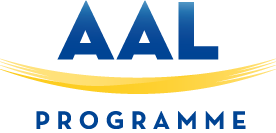Assistive device Alice will consist of smartphone wirelessly connected to local or in perspective remote processing unit. Apart from the camera, Alice will utilise sensors for position detection, orientation, movement and distance from obstacles. The position and distance mapping will be cross-referenced and processed in combination with the visual information, avoiding ambiguities in the semantics. Alice will use artificial intelligence to plan and anticipate based on fusion of sensory inputs and previous knowledge. The system will verbalise its perceptions trough intuitive audio system and synthesised voice to translate visual to verbal in comprehensive and user friendly manner. The user will be able to communicate with the system through a voice interface.
Principal end users are elderly blind who will be involved in each iteration of ALICE development by providing suggestions and guiding the change of requirements according to their experiences. Other users of the system are relatives and carers who will set-up and share routs for navigation leading to the development of a respective community.
Objectives
The objective of the project is to develop an assistive device called ALICE with navigational and cognitive abilities. The purpose of such a device is to improve the quality of life of ageing people with impaired vision by providing them better mobility and enhancing their perception of the environment.
The assistive device called Alice will navigate user and offer a cognitive description based on a fusion of perceptions gathered from a range of sensors. For that research developments in cognitive sciences, psychology, computer vision, artificial intelligence, robot navigation and advances in positional audio will be combined.
Expected results and impact
The assistive device Alice will help blind and visually impaired to:
- navigate to and from a specific point;
- search for objects and recognise people;
- issue a warning about obstacles and imminent danger and;
- reinstate the cognitive sight system by supplying missing information to help familiarise themselves with their surroundings;
This will increase social inclusion and help users manage their everyday life more independently.
Partners
Partners involved in the ALICE project
- Project name: Assistance for Better Mobility and Improved Cognition of Elderly Blind and Visually Impaired – ALICE
- Website: www.alice-project.eu
- Coordinator: Comland d.o.o. IT Solutions Development, Slovenia
- Duration: 30 Months
- Starting Date: 01.06.2012
- Total budget: € 1.797.253
- Public contribution: € 1.107.169
Contact
Mateja Vižintin
E.: mateja.vizintin@comland.si
T.: +386 1 438 0178
